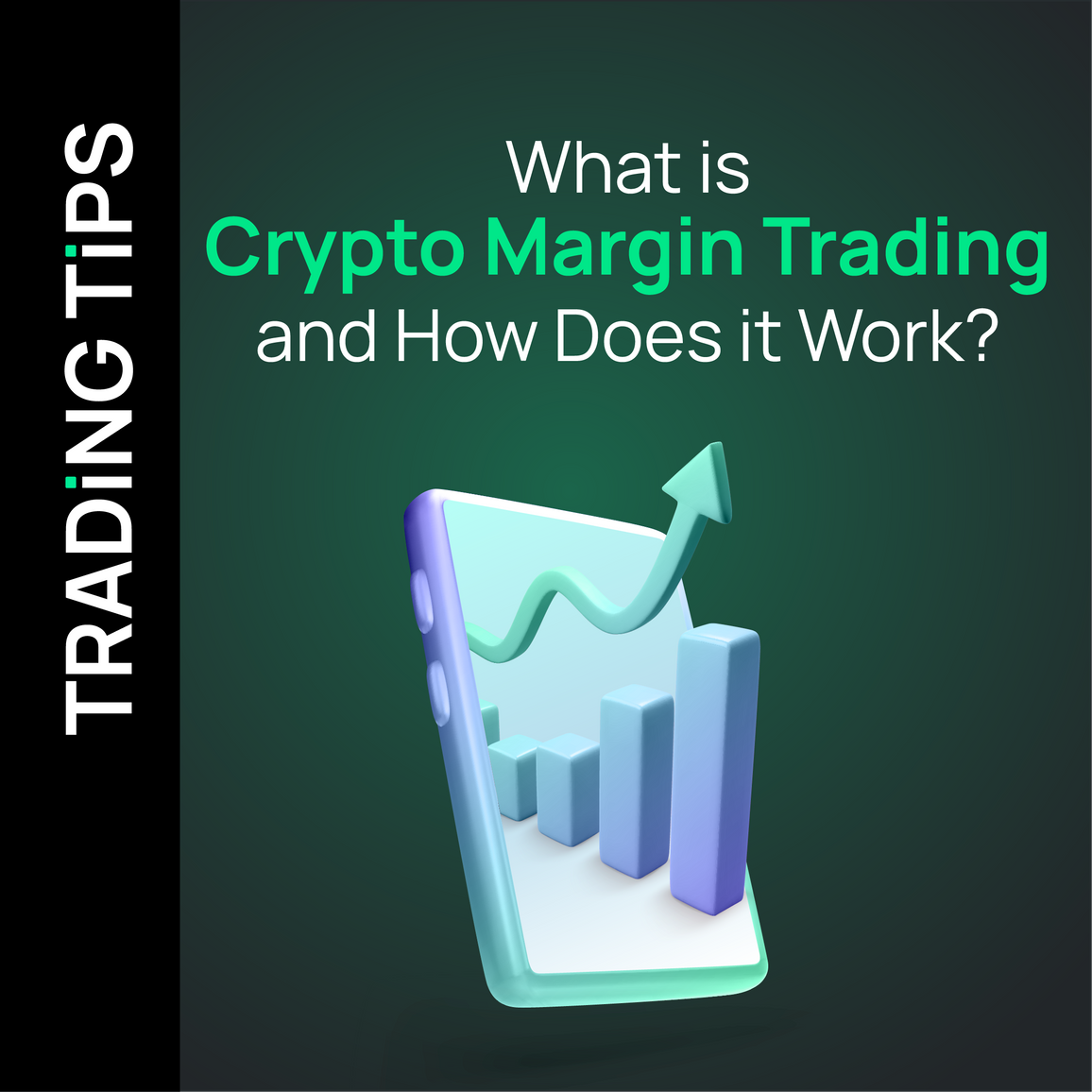What is Crypto Margin Trading and How Does it Work?

Similar to the traditional stock market, crypto traders can open a crypto position with more money than they own in their wallets. Crypto margin trading is one of the ways to accomplish such an activity.
Buying on margin means borrowing money from a digital asset broker or exchange to trade cryptocurrencies. However, such an opportunity comes with significant risks. This article discusses what crypto margin represents and how it works from the inside.
Margin Trading — Explained
Margin trading is popular in low-volatility markets like the global foreign exchange market because it can magnify a trader's outcomes on profitable deals. In conventional markets, investment brokers provide the borrowed cash for margin traders. However, in the crypto market, the borrowed funds are supplied by other crypto traders who earn interest based on the market's demand for margin funds.
In sum, trading crypto assets through margin involves using additional money from a third party, enabling traders to take full advantage of their crypto bets.
Furthermore, traders can enter either long or short stakes using margin trading. A Long position is a bet that the value of an asset would appreciate. In contrast, a Short reflects the expectation that a commodity's value would decrease.
How Does Margin Trading Work?
When a trader initiates a leveraged deal, the exchange typically requires them to commit a portion of the entire order value. This initial deposit, called ‘margin,’ is for entering leveraged positions in a specific ratio to the borrowed funds.
For instance, a trader would need to deposit $1,000 of cash to open a $10,000 transaction at a leverage of 10:1.
Nonetheless, various trading platforms and marketplaces have unique guidelines and leverage rates. While the stock market uses 2:1 as a typical ratio, forex brokers use leverage at a 50:1 ratio. On the other hand, the crypto market's leverage ranges from 2:1 to 100:1, denoting them using the ‘x’ terminology as in 2x, 5x, 10x, 50x, and 100x.
Notably, the trader's deposited assets are collateral for the borrowed funds. If the market significantly influences a trader’s bet in the opposite direction, the exchange would ‘margin call’ the trader to add more funds to their margin account to beat the minimum trading requirement. Else, their holdings will liquidate to cover the losses.
Liquidation often happens when the entire value of all the equities in a margin account falls below the overall margin needs of that specific exchange or broker.
Pros and Cons of Margin Trading
The most apparent benefit of margin trading is that it has the potential to generate more earnings since the relative value of the trading stake is higher. In addition, it offers traders the opportunity to open many positions with very little investment cash. Lastly, a margin account can help traders open positions rapidly without transferring substantial amounts of money to their accounts.
Despite its benefits, a notable disadvantage is that the likelihood of losing is much higher than profiting from margin trade. Margin trading is rated a high-risk trading strategy because, unlike conventional spot trading, it exposes traders to the chance of losses that surpass their initial investment.
A slight decline in the market can result in significant casualties for traders depending on the degree of leverage used in a deal. As a rule of thumb, traders are encouraged to adopt appropriate risk management techniques and risk reduction instruments, such as stop-limit orders.
Alternative Margin Trading
Risk-averse investors have an alternative to benefit from margin trading activities without directly engaging in a leveraged trade. This strategy entails making financial commitments to fund the margin transactions of other users while earning a commission.
The risk of providing margin funds is low as brokers enforce forced liquidation on bad trades to prevent excessive loss. Nonetheless, the mode of execution varies from exchange to exchange.
Additionally, top-tier exchanges like BIT Exchange have the borrow mode on their spot and future market. Borrow mode allows users to buy and sell a token, even if they do not hold it.
On BIT Exchange, for example, you can toggle on the borrow button if you don't have USDC. However, if you want to buy BTC on the BTC-USD pairs and there are other tokens in your wallet, they can be converted to a certain USD amount which you'll then use to buy BTC. The borrow mode allows you to use your wallet balance to borrow USD and buy BTC.
Closing Thoughts
As with all leveraged trading, margin trading is riskier than traditional buying and selling digital assets. The dangers magnify when dealing with cryptocurrencies, given the high levels of volatility of the crypto market.
While the risks associated with margin trading are unavoidable, they may be better anticipated and managed by examining market charts, seeing patterns, and deciding when to enter and quit a transaction. Margin trading hopefuls are encouraged to have a profound grasp of technical analysis and a wealth of spot trading expertise before leveraging their bitcoin transactions.
Disclaimer
This article should not be taken as financial or investment advice. Making an investment or financial decision is a choice. Do your research!
About BIT
BIT is a full-featured cryptocurrency exchange that is designed for use by professionals. It provides services such as the execution of trading strategies, price discovery, and liquidity provision. BIT is always working to encourage the creation of innovative new financial products, improve the trading tools available to users, and offer a wide variety of tokens. Trade with confidence knowing that the platform is built with institutional-grade security and risk management measures in place. Sign up for BIT and switch on your future.
Sign up on BIT, and switch on your future.

